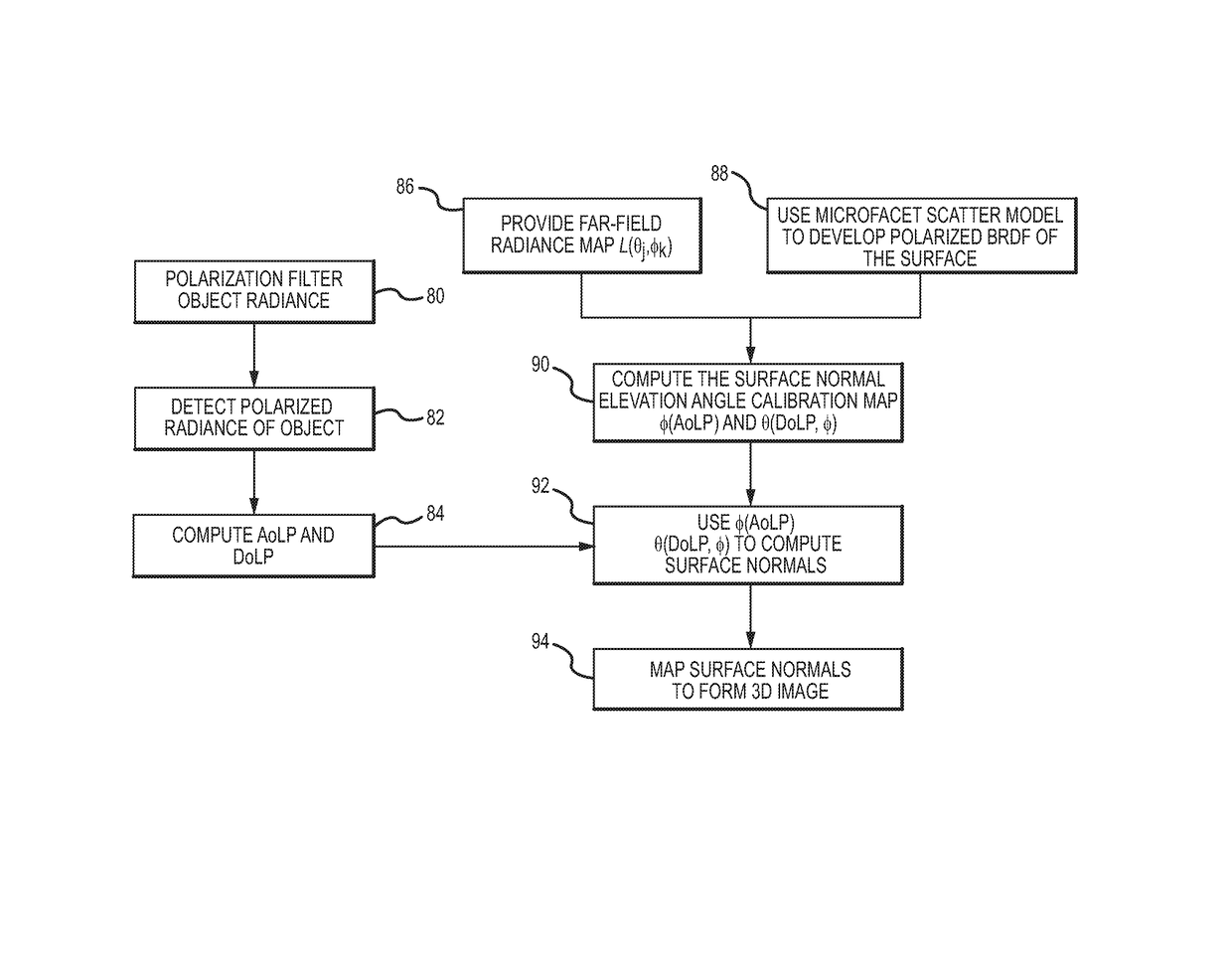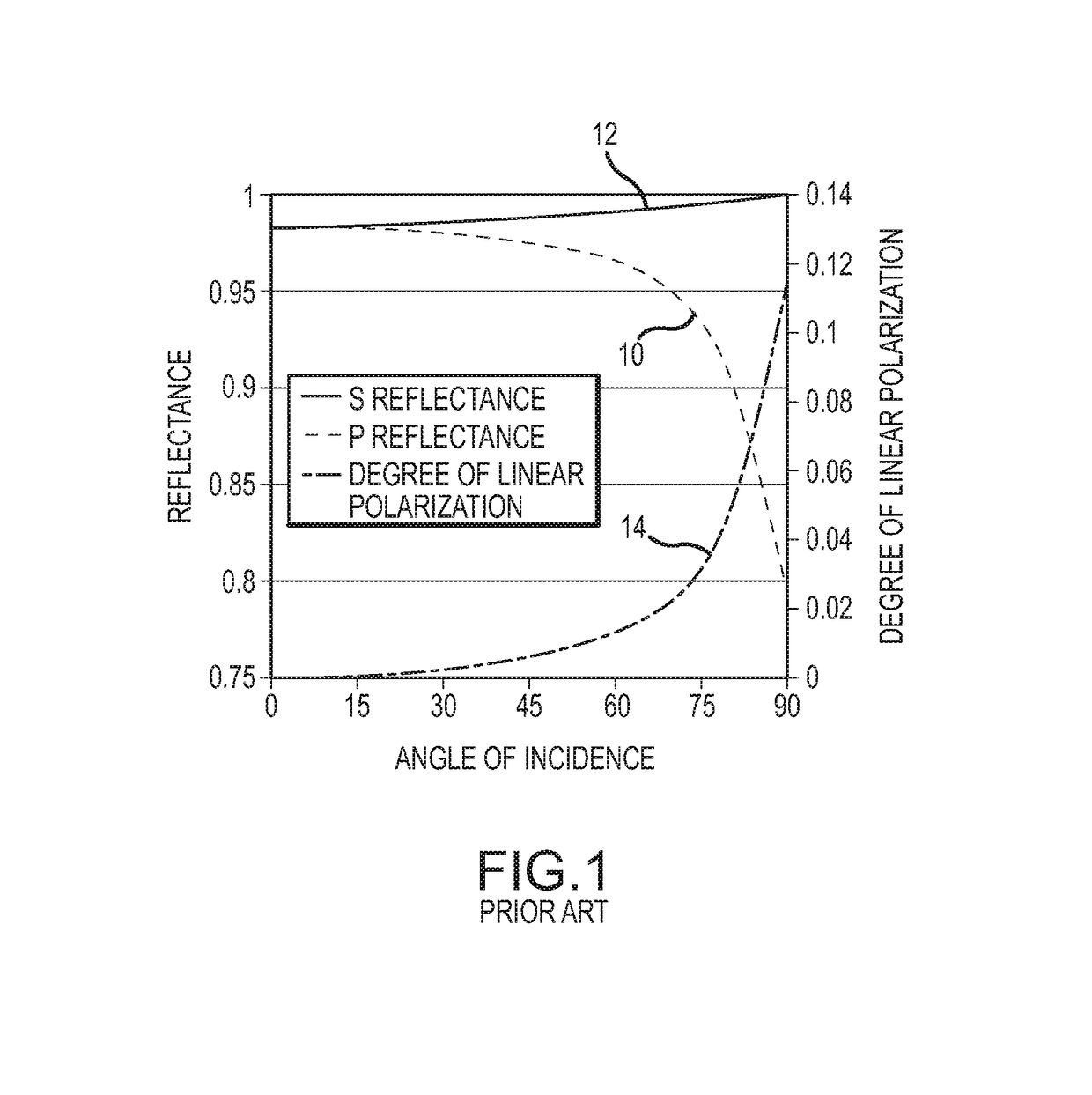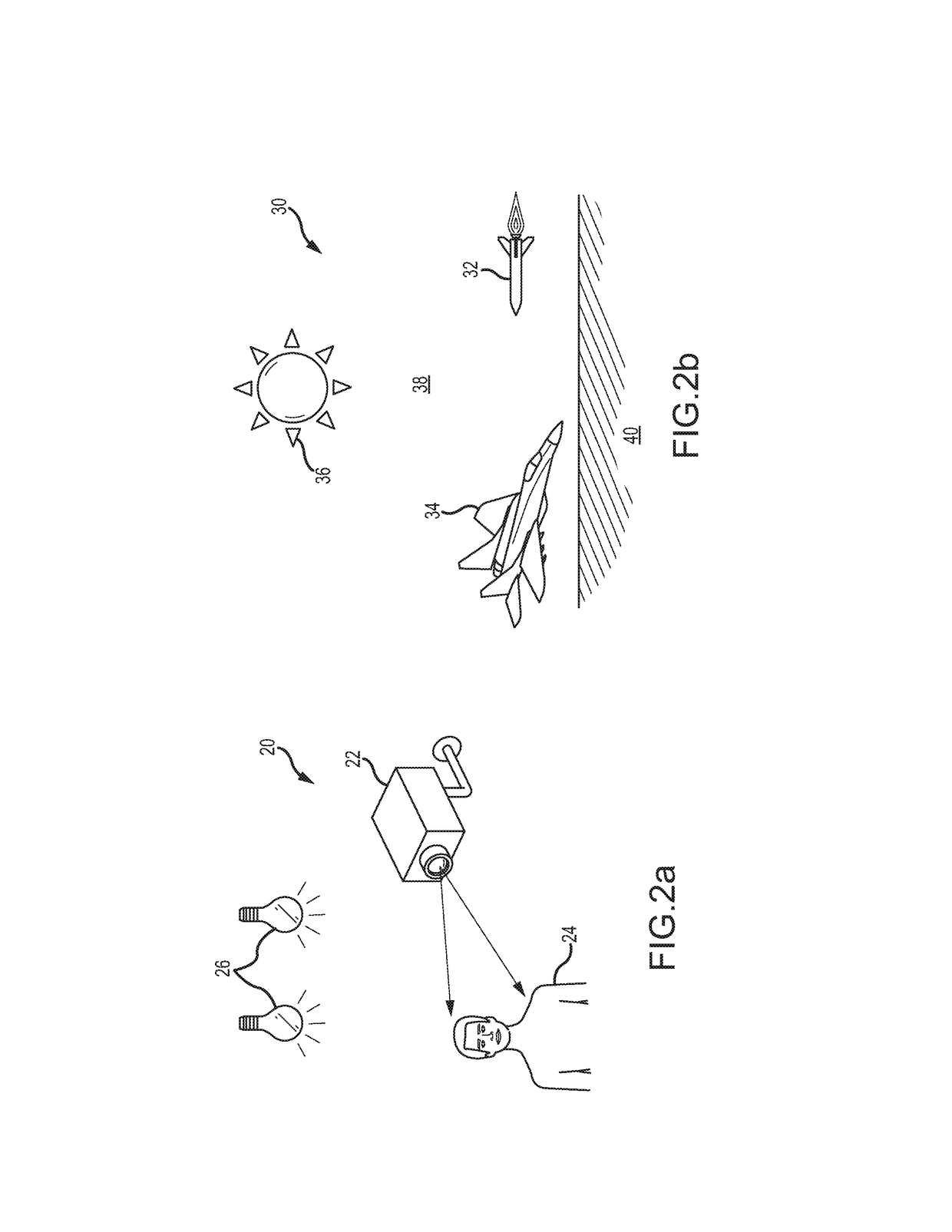3-D polarimetric imaging using a microfacet scattering model to compensate for structured scene reflections
a scattering model and structured scene technology, applied in the field of 3d polarimetric imaging, can solve the problems of limited calibration map accuracy and corrupt 3-d image, and achieve the effect of accurately generating the surface normal calibration map
- Summary
- Abstract
- Description
- Claims
- Application Information
AI Technical Summary
Benefits of technology
Problems solved by technology
Method used
Image
Examples
Embodiment Construction
[0030]Known techniques for 3-D polarimetric imaging are neither sufficiently robust nor accurate to have achieved commercial viability. These techniques are either predicated upon an assumption of lighting conditions that is not realistic (e.g., no structured scene reflections) or upon an assumption of the measured reflectance due to structured scene reflections (e.g., a combination of specular and diffuse reflection) that is often inaccurate and produces sparsely populated calibration maps.
[0031]The present technique for 3-D polarimetric imaging, and more particularly for generating the surface normal calibration maps φ(AoLP) and θ(DoLP,φ), makes neither assumption. This approach uses Stokes vectors to describe the polarization state of the structured scene reflections and Mueller calculus to describe the effect of the object surface on the polarization state of the light. A microfacet scattering model is used to develop the functional form of a polarized bidirectional reflectance ...
PUM
 Login to View More
Login to View More Abstract
Description
Claims
Application Information
 Login to View More
Login to View More - R&D
- Intellectual Property
- Life Sciences
- Materials
- Tech Scout
- Unparalleled Data Quality
- Higher Quality Content
- 60% Fewer Hallucinations
Browse by: Latest US Patents, China's latest patents, Technical Efficacy Thesaurus, Application Domain, Technology Topic, Popular Technical Reports.
© 2025 PatSnap. All rights reserved.Legal|Privacy policy|Modern Slavery Act Transparency Statement|Sitemap|About US| Contact US: help@patsnap.com



